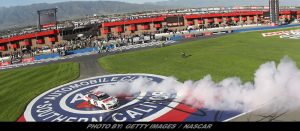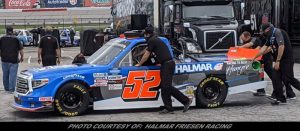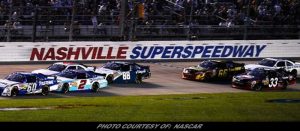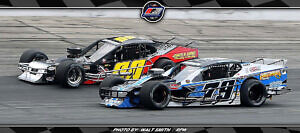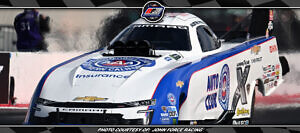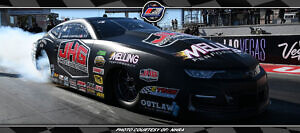
Column By: JOHN DOUGLAS / RPW – LONG POND, PA – This past weekend saw the three series of NASCAR split between Iowa Speedway and Pocono Raceway. The two facilities couldn’t be different in size or shape. So what prevailed? The Tricky Triangle, the D-Shaped 1 mile that races like a short track, or was it just a win for the fans? Let’s find out.
The Good:
My gosh what has happened lately? All three series put on some hot and heavy racing all weekend long. Some fans have been complaining for a long time that either drivers don’t try hard enough or they go in over their heads. Well this weekend we saw hard racing through all three series and not a lot of the over zealous moves that get people riled up with furor.
The XFINITY Series race on Saturday night was a great example as the final ten laps showed the real talent the front runners including Christopher Bell, Brandon Jones and Kyle Benjamin have as they battled through multiple restarts. Then along came Justin Allgaier. Poking his nose in front of the pack just as the caution came out.
However the race was far from over. One final restart saw Bell beat out the rest for the win, however those final laps were some of the most intense racing you’ll ever see.
The Bad:
Darrell “Bubba” Wallace’s brake failure in turn one at Pocono Raceway on Sunday afternoon was by far the scariest moment of the year to date. In an accident that we’ve seen, frankly, one too many times over the years, Bubba’s car went through the infield grass and slammed hard into the outside SAFER Barrier.
NASCAR has done a lot over the years to improve safety in this sport and they should be nothing but commended for the job they’ve done in responding to a myriad of issues. However, this scenario is one they have not looked at. Something should be done to prevent a full on impact with the outside wall in this case.
We’ve all heard multiple times since the accident occurred that the natural instinct of the driver is not to ride the outside wall scrubbing speed but to bail through the infield trying to salvage the car. Perhaps it’s time Pocono installed a sand trap. It wouldn’t cost an astronomical amount to leave a 5 foot wide strip of grass around the perimeter of the infield and fill the rest with gravel.
This method has been used for years in road course racing and drag racing in the runoff area and may be appropriate to aid in a driver’s ability to slow their car down significantly more than they currently do when their instinct kicks in.
The Ugly:
Post qualifying inspection at Pocono was one of the more embarrassing things NASCAR has had happen this season. This wasn’t NASCAR’s fault. Teams that are at the very top of this sport are trying to gain any advantage they can over their competition and yes, that’s their job. However, when it takes three and four times to get the car acceptable to NASCAR’s standards, it hurts the competition and the overall race weekend for not only the teams themselves, but gives the impression to the fans that these teams are cheating. We have to look at this from a new viewpoint. This is no longer the NASCAR that moonshiners built. People aren’t looking for new tricks to out run the cops with a trunk full of whiskey and though performance and results matter, we aren’t in a scenario like the 1970’s when the speed barriers were being broken.
We’re in a situation where the development has plateaued in the sport. Horsepower is being reduced, standardized bodies are being used and every aspect of the frame and chassis fall under strict guide lines from the sanctioning body. Yes. Every little advantage can put you above the competition. However I think we need to start looking at cheated up race cars like a person in a stick and ball sport who tries to use an illegal performance enhancing drug.
These teams are using performance enhancing parts or aerodynamic tricks to gain an unfair advantage. The current penalties are not stopping them from trying. Perhaps they should be harsh enough to do so. Then and only then will you get a truly fair and level playing field to play on. Budgets and ancillary business factors will always be there, but NASCAR needs to take technical infractions on this scale to a whole other level of punishment to deter it from being 13 cars failing a post qualifying inspection process, some more than twice.

